Group in striped swimwear
Japan's Naval Self-Defense Forces (JMSDF) are second in importance fleet in the Asia-Pacific region.
A thoroughly thought-out combat system, where the latest technology is closely intertwined with the ancient samurai traditions. The Japanese fleet has long lost the status of a “funny” formation that exists only for the pleasure of gaze of the Japanese themselves and the performance of minor support tasks within the framework of the multinational system of the US Navy. Despite its pronounced defensive nature, modern Japanese sailors are able to independently conduct military operations and protect the interests of the Nihon Koku in the vast Pacific.
The leading force of the Japanese Self-Defense Forces is traditionally squadron destroyers. The bet on destroyers is easy to explain: this class of ships successfully combines versatility and moderate cost. To date, the Japanese fleet includes 44 ships of this class, built at different times on 10 various projects.
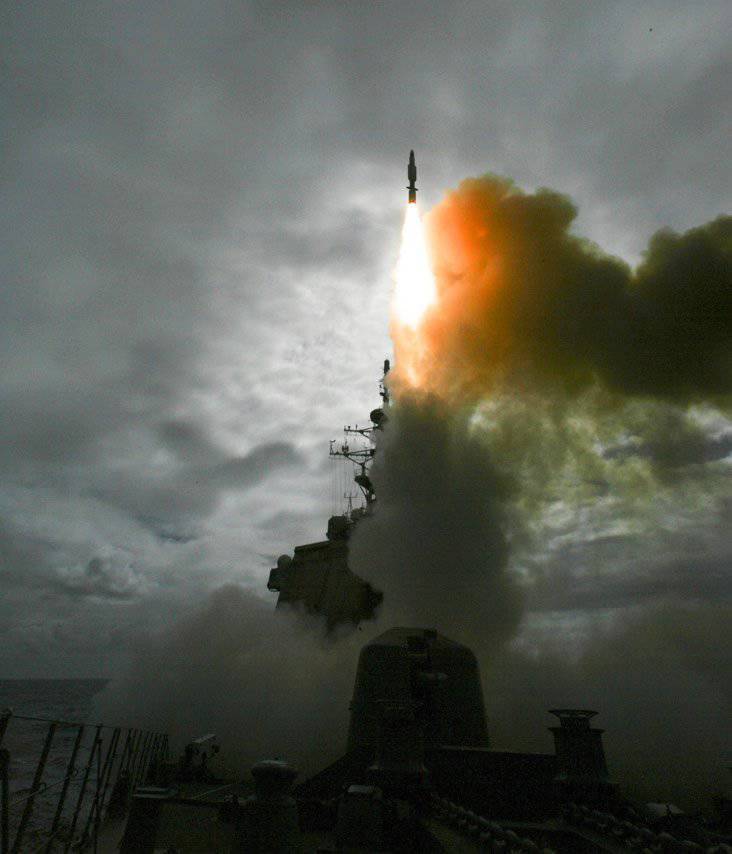
Despite the seeming inconsistency and lack of standardization, which should complicate maintenance and increase the operating costs of such a disparate squadron, the naval forces of the Japanese Navy are clearly divided into three large groups according to their purpose:
- Aegis destroyers to provide zonal air defense / missile defense;
- helicopter destroyers - a specific attribute of the Japanese fleet, for the most part perform the tasks of search and rescue and anti-submarine ships;
- "ordinary" destroyers, whose task is to ensure the safety of the squadron against sea and underwater threats. Also serve as platforms for the deployment of object air defense.
The imaginary variety of structures actually turns out to be a combination of several similar projects with modified superstructures and an updated composition of weapons. Naval forces of self-defense are rapidly evolving - annually in Japan funds are allocated for the construction of 1-2 new destroyers. This allows you to quickly make changes to ship designs in accordance with changing external conditions and gaining access to new technologies. The main feature - the Japanese manage to translate these ideas not only on paper, but in metal.
If we remove from consideration deliberately outdated ships built in 1980-ies and are preparing to be written off in the near future, the composition of the surface component of the Marine Self-Defense Forces will look like this: 10 modern destroyers of the Congo, Atago, Akizuki and "Hyuga" taken into combat by JMSDF in the period from 1993 to 2013 year.
In addition, the fleet also includes 14 universal destroyers of the Murasame and Takan types, adopted by the fleet in the period 1996 - 2006. These ships are cheaper versions of Aegis destroyers - "transitional" projects for running new technologies, which were later implemented on the "Akizuki".
Today I would like to talk about the evolution of Japanese destroyers. The topic is not easy, but familiarity with it gives many reasons for disputes. Are the Japanese doing the right thing, betting on destroyers of the destroyers?
Congo type
A series of four ships was built in the period 1990-1998.
The total displacement is 9580 tons. 300 crew
Gas turbine power plant (4 licensed GTE LM2500) horsepower 100 000
Full speed 30 knots.
4500 sailing range at economic speed 20 knots.
Armament:
- 90 vertical launch installations Mk.41 (SM-2, SM-3 anti-aircraft missiles, ASROC VLS PLUR);
- 127 mm universal gun with a barrel length 54 caliber;
- 8 anti-ship harpoon missiles;
- 2 anti-aircraft machine "Phalanx";
- small anti-submarine torpedoes, aft landing pad for a helicopter.
The massive “tower” of the superstructure, whose walls are decorated with AN / SPY-1 radar grilles, underdeck UVN on 29 (nasal) and 61 (aft group) cells, characteristic chimneys, white Falanx caps, a close helipad on the stern ... Yes the same American “Orly Burk” of the first sub-series (Flight I) with all its advantages and disadvantages!
It is known how difficult the decision was to transfer technology Aegis to Japan - the negotiations lasted four years, and finally, in 1988, the Congress approved the decision - Japan was the first of the US allies to have access to secret technology. The construction of the first ship began two years later - in March 1990 g. The destroyer Orly Burk was taken as a basis; nevertheless, the Japanese version differs markedly from the prototype, both in the internal layout and in appearance. All four ships were named in honor of the famous cruisers of the Imperial fleet that participated in the Second World War.
At first glance, a bulky nasal superstructure and a vertical mast stand out. Compared with the original "Burke", the layout of the superstructures and the placement of weapons were changed, instead of the American gun Mk.45, the 127 mm gun of the Italian company OTO Breda was installed.
Unlike dozens of American "ordinary" fighters like "Berk", the Japanese decided to saturate four of their most modern destroyers with a variety of equipment, turning them into multifunctional warships.
At the moment, the ships have been re-equipping the SAM-Standard SM-3 to destroy targets in the upper atmosphere and in low-Earth orbit. Destroyers of the Congo type included the composition of the “anti-missile shield” of Japan - their key task is to reflect possible ballistic missile strikes from North Korea.
Atago type
A series of two ships was built in the period 2004-2008.
They are a further development of Aegis destroyers of the Congo type. The destroyer Burke of the IIA sub-series (Flight IIA) was chosen as the prototype of the Atago - along with the additional equipment saturation, the full displacement of the Atago exceeded 10 000 tons!
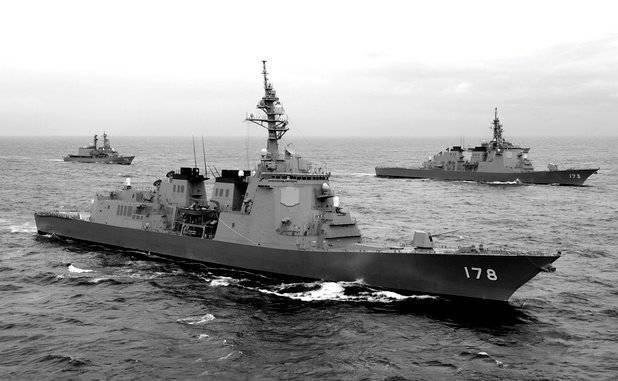
Compared with the Congo, the new destroyer received a helicopter hangar, the height of the superstructure increased - a two-level flagship command post was located inside. BIUS "Aegis" has been upgraded to Baseline 7 (phase 1). UVP were upgraded - the refusal of the boot devices allowed to increase the number of starting cells to 96 pieces. Instead of an Italian cannon installed licensed American Mk.45 with a barrel length 62 caliber. RCC "Harpoon" replaced by anti-ship missiles "Type 90" (SSM-1B) of its own design.
The only thing the Japanese are sadly sorry about is the absence of Tomahawk tactical cruise missiles on board the Atago. Alas ... the Japanese fleet is forbidden to have strike weapons.
Type "Murasame" (jap. "Heavy rain")
A series of 9 units was built during the period 1993 - 2002.
The total displacement is 6100 tons. 165 crew
Gas turbine power plant (a combination of licensed GTE LM2500 and Rolls Royce Spey SM1C) power 60 000 HP
Full speed 30 knots.
4500 sailing range at economic speed 18 knots.
Armament:
- 16 vertical launch installations Mk.48 (32 anti-aircraft missiles ESSM);
- 16 vertical launch systems Mk.41 (16 ASROC-VL anti-submarine rocket-torpedoes)
- 8 90 Type anti-ship missiles (SSM-1B);
- 76 mm universal gun OTO Melara;
- 2 anti-aircraft machine "Phalanx";
- small anti-submarine torpedoes;
- anti-submarine helicopter "Mitsubishi" SH-60J / K (licensed version of the "Sikorsky" SH-60 SiHouk).
“Hope for the States, but don’t make it yourself” - probably, this is how the JMSDF management argued at the beginning of the 1990-s when it decided to design and build destroyers of the Murasame type. These ships were supposed to be the development of their own projects of destroyers with "interspersed" technologies of foreign "Orly Burke". A cheaper version of the universal destroyer, whose main tasks include anti-submarine defense and the fight against enemy surface ships.
Externally, the "Murasame" was not like any of the ships that were previously built in Japan. Superstructures with elements of technology "stealth" unrecognizably changed the look of the new destroyer.
The world's first OPS-24 active phased array radar, installed on a platform in front of the mast (Japanese proprietary design). Below deck launchers Mk.41 and Mk.48. Electronic countermeasures system NOLQ-3 (licensed version of the American AN / SLQ-32) ... but the main feature of Murasame was hidden inside - the destroyer was equipped with a new generation combat information and control system of the C4I type (command, control, computer, communication & intelligence) based on the American Aegis subsystems.
Initially, the Murasame project provided for the construction of 14 destroyer destroyers, but during the construction process it turned out that the design of the destroyer has opportunities for further development. As a result, the 5 last destroyers of the series were completed under the Tacan project.
Type "Takans" (Jap. "High wave")
A series of 5 units was built during the period 2000 - 2006.
The new destroyer received improved communications and fire control systems. The composition of armaments was updated: instead of two separate UVPs - Mk.41 and Mk.48 - in the bow of the Takans they installed a single module on the 32 cell (ASROC-VL rocket-torpedoes, anti-aircraft ESSM). The artillery unit was replaced by a more powerful Italian OTO Breda caliber 127 mm.
The rest of the original design has not changed.
Type "Akizuki" (Jap. "Autumn Moon")
A series of 2 units was built during the period 2009 - 2013. Two more destroyers of this type are planned to be commissioned in 2014 year.
The total displacement is 6800 tons. 200 crew
Type of power plant - 4 licensed GTD "Rolls-Royce" Spey SM1C
Full speed 30 knots.
Navigation range: 4500 miles at economic speeds of 18 knots.
Armament:
- 32 installations of vertical launch Mk.41 (ESSM anti-aircraft missiles - on 4 in each cell, ASURC-VL PLUR);
- 8 90 Type anti-ship missiles (SSM-1B);
- 127 mm universal gun Mk.45 mod.4;
- 2 anti-aircraft machine "Phalanx";
- small anti-submarine torpedoes;
- anti-submarine helicopter "Mitsubishi" SH-60J / K.
"Autumn Moon" - the heir to the legendary Japanese air defense destroyers during the Second World War.
The current "Akizuki" is in many ways a brilliant design that has become a transformer of American ideas in the manner of the country of the Rising Sun. The main element around which the destroyer is built is the ATECS combat information management system, known among specialists as the “Japanese Aegis”. The promising Japanese BIUS is half assembled (well, who would doubt!) From American nodes - working computer stations AN / UYQ-70, standard “NATO” link 16 network of cheating data, satellite communication terminals SATCOM, hydroacoustic complex OQQ-22, which is a copy of the American ship GAK AN / SQQ-89 ...
But there is a serious difference - the FCS-3A detection system (developed by Mitsubishi / Thales Netherlands), consisting of two radars with active PAR, operating in the C frequency ranges (7,5 to 3,75 cm wavelength) and X (3,75 to 2,5 wavelength cm).
The FCS-3A system endows Akizuki with absolutely fantastic talents: in terms of capabilities to repel massive air attacks and detect low-flying anti-ship missiles, the Japanese destroyer is superior to the American Orly Burke.
Unlike the decimeter AN / SPY-1, Japanese centimeter-range radars clearly see targets at extremely low altitudes, near the surface of the water. In addition, an active phased array provides dozens of guidance channels in any direction - the destroyer can simultaneously direct missiles at many air targets (for comparison, the American Burke has only three AN / SPG-62 radars for target illumination, including the front hemisphere accounted for only one).
To be fair, it should be noted that in terms of interception of targets at large distances, the capabilities of Burke and Akizuki are incomparable - the powerful AN / SPY-1 is able to control the situation even in low near-earth orbits.
We must pay tribute to the Japanese - "Akizuki" is really cool. This impregnable fort capable of smashing targets on water, under water and in the air. Moreover, the newest radio-electronic systems and weapons successfully housed in a hull that is structurally similar to the destroyers Murasame and Takanami. As a result, the cost of building the head super-ship was “only” 893 million. This is really very little for a ship with such capabilities - for comparison, modern modifications of the American Berkov are sold at the price of 1,8 billion dollars!
Within the framework of the concept of using JMSDF, destroyers of the "Akizuki" type are intended for joint operations with Aegis destroyers - they must cover their older "colleagues" from attacks from under water and provide air defense at close and medium distances.
Type "Hyuga"
A series of 2 units was built during the period 2006 - 2011.
Full displacement 19 000 tons. 360 crew
Gas turbine power plant (4 licensed GTE LM2500) horsepower 100 000
Full speed 30 knots.
Built-in weapons:
- 16 vertical launch installations Mk.41 (ESSM anti-aircraft missiles, ASROC-VL PLUR);
- 2 anti-aircraft machine "Phalanx";
- small anti-submarine torpedoes caliber 324 mm;
Aviation armament:
- X-NUMX helicopters SH-11J / K and AugustaWestland MCH-60 (standard air group);
- solid flight deck, 4 positions where take-off and landing operations can be carried out at the same time, under-deck hangar, 2 lift for aircraft equipment.
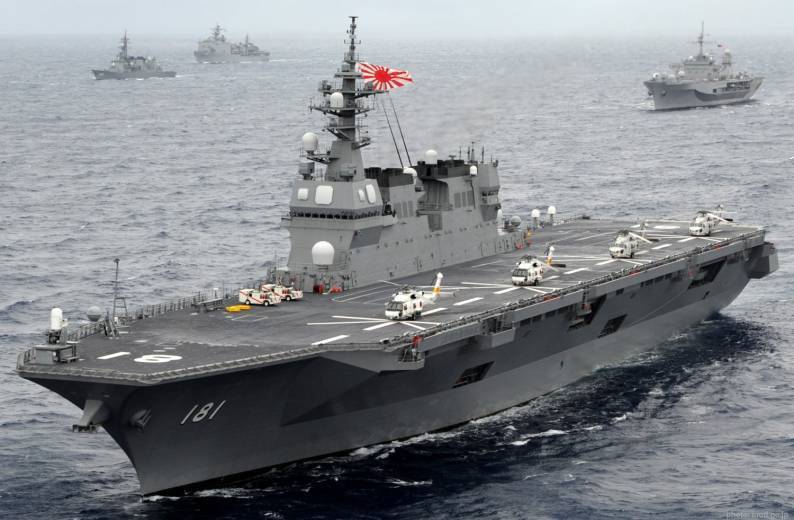
Many lovers of the naval theme stubbornly accept these strange destroyers, overgrown for light aircraft carriers. A lot of “serious” calculations have already been done - how many F-35 fighters can fit on the Huygh deck, how to set the springboard ... no one pays attention that Japan does not plan to acquire F-35B VTOLs (even the ground supply of F-42A is large question).
"Hyuga" - just a major helicopter destroyer, the successor of the traditional class of ships JMSDF. It is not similar to any of the existing aircraft carriers, just as it is not similar to the UDC "Mistral" - despite the similar size and helicopter air group, the "Hyuga" does not have a dock camera and is not a universal landing ship.
Instead, it has 30-nodal speed and built-in complex weapons (medium-range anti-aircraft missiles, anti-submarine missile torpedoes, self-defense systems) - all this is under the control of the ATECS control system and the remarkable FCS-3 radar, similar to those installed on the Akizuki. And also the whining sonar OQQ-21, the developed EW systems - everything is like on a real destroyer destroyer.
But the most remarkable feature of the "Hyugi" is a solid flight deck and an excessively numerous for the destroyer air group - 11 multipurpose and anti-submarine helicopters (their number may well exceed the stated figure, because 16 machines fit the size of the Mistral).
What is the meaning of building such monsters?
The Japanese see the use of helicopter destroyers as effective anti-submarine ships. Search and rescue functions, work in emergency areas, sea patrol missions. Surely there is a possibility of disembarking point helicopter landings from the "Hyugi"; participation in international military operations as an auxiliary ship is possible.
The solid flight deck allows you to receive not only the "Sikhoki", but, in the future, large helicopters and convertible planes.
In general, according to the logic of the Japanese command, the possession of a pair of such ships can noticeably increase the potential of the fleet and diversify the number of tasks performed. Finally, the appearance of a hefty helicopter carrier destroyer will not leave indifferent any of the visitors of the naval salon, the Hyuga and its sister thorn Ise enhance the prestige of sailors not only in the eyes of the whole nation, but also abroad.
Finale
Predicting the questions ahead: What does all this mean for the Russian Pacific Fleet? Who is stronger - ours or the Japs? I can only note the following: it makes no sense to compare the Pacific Fleet and the JMSDF head-on - too different fleets created for different tasks.
Nevertheless, JMSDF looks more profitable for one simple reason - Japan’s naval self-defense forces exist within the framework of a clear concept of countering direct military threats from North Korea and protecting their interests in the East China Sea from claims from the PRC. As for our Pacific Fleet, probably, none of those present will be able to clearly formulate the answer to the question: what specific tasks does our Pacific Fleet solve and what ships are necessary for it to do.
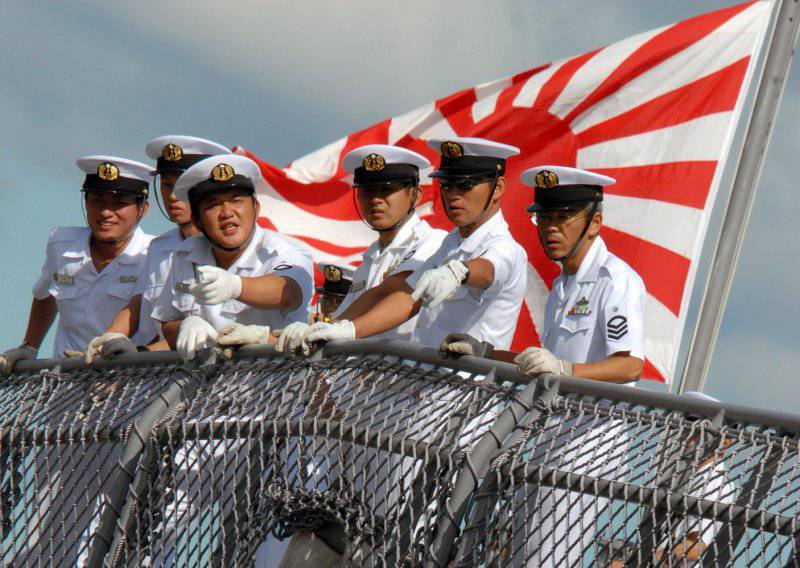
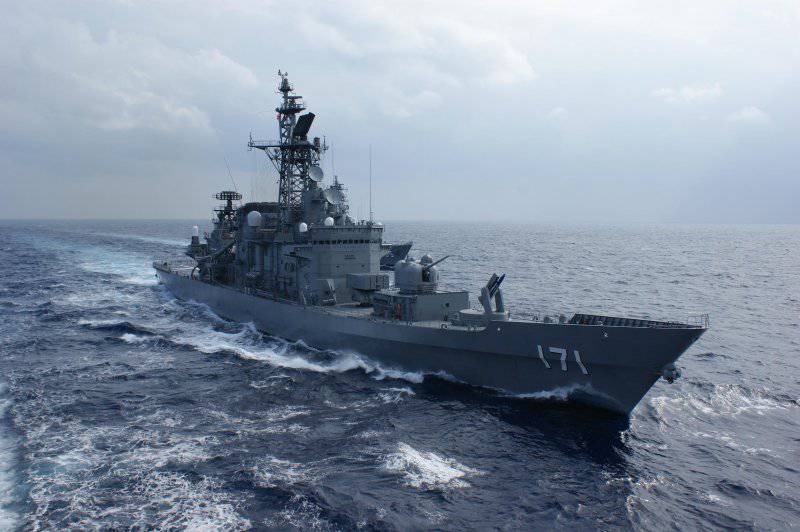
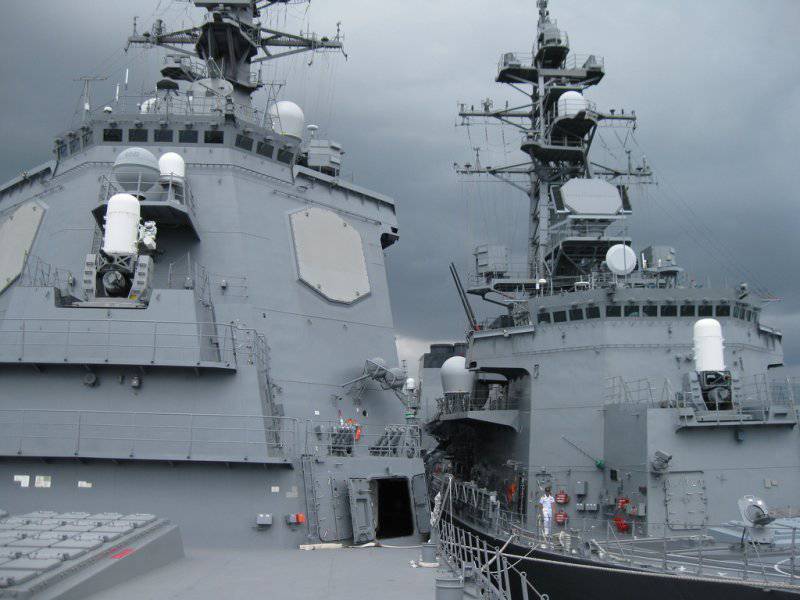
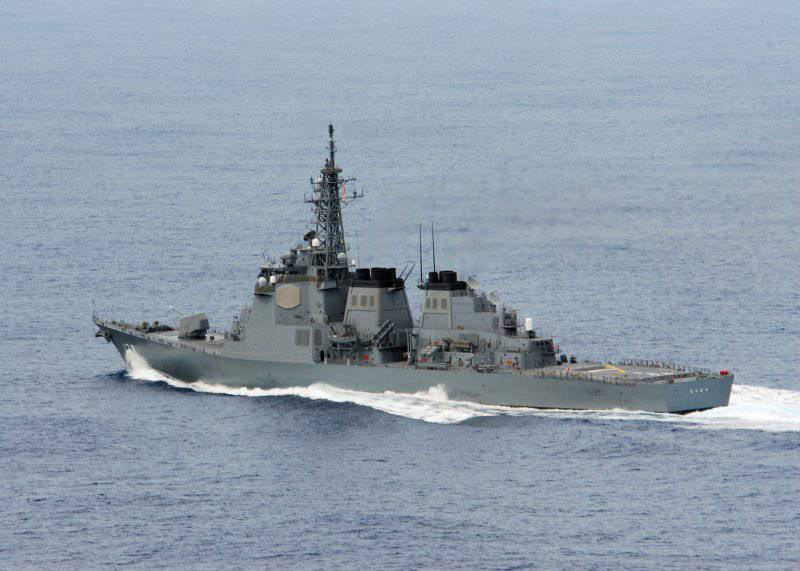
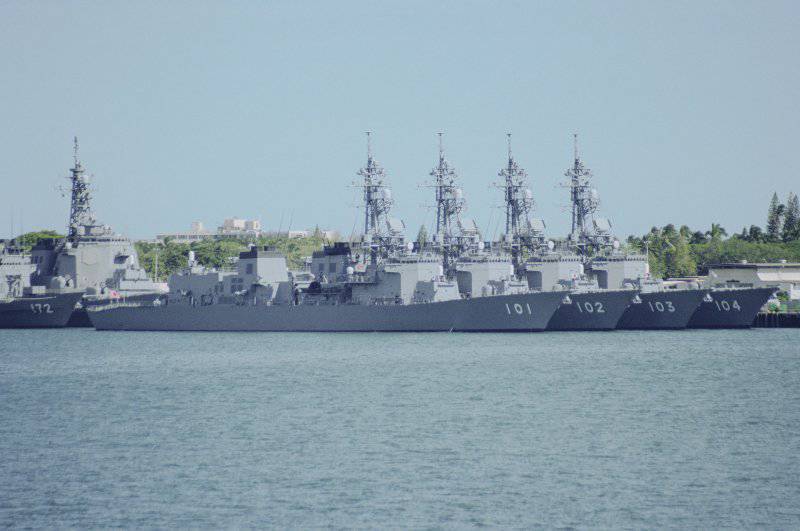
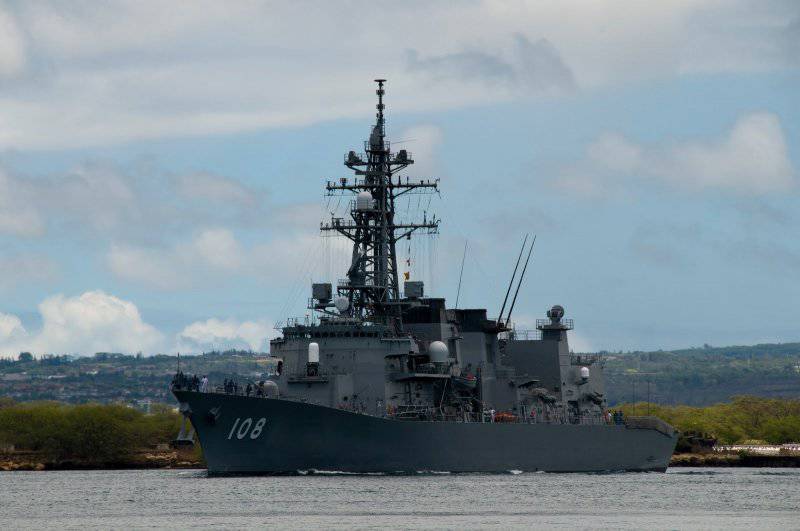
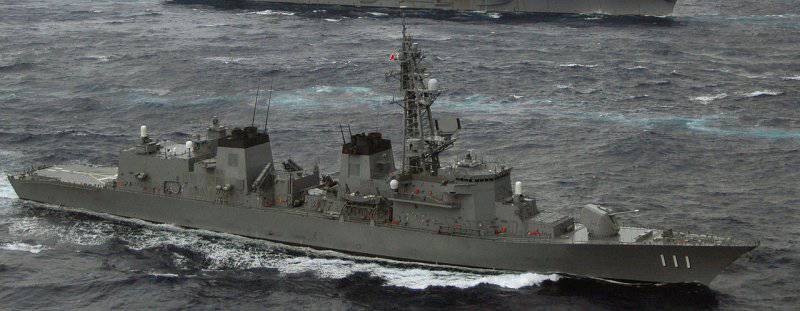
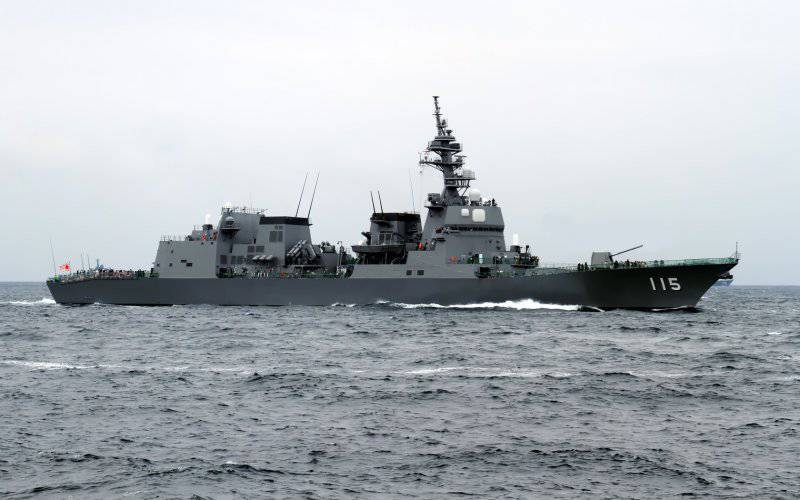
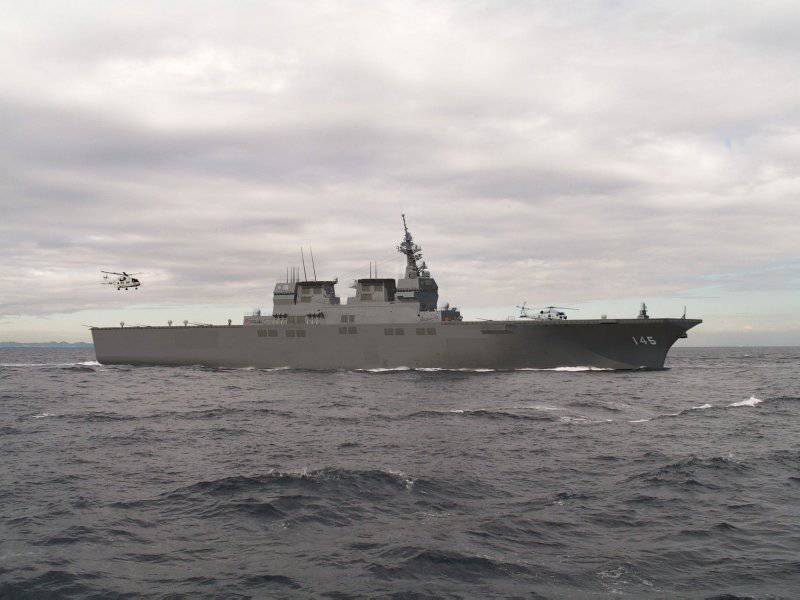
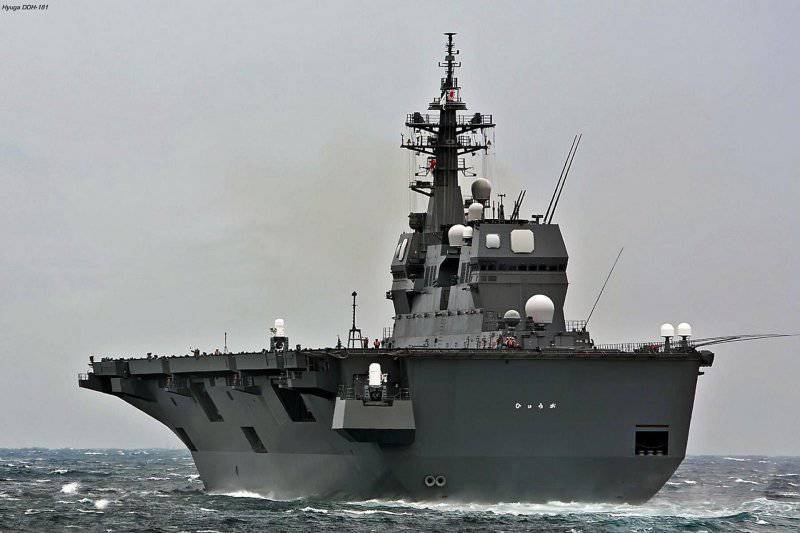
Information